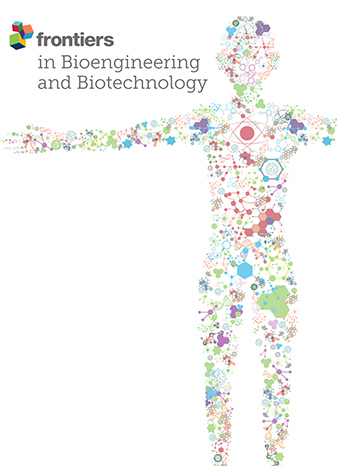土壤特性和微生物群落组成对农田人参中人参皂苷积累的影响
IF 4.3
3区 工程技术
Q1 BIOTECHNOLOGY & APPLIED MICROBIOLOGY
引用次数: 0
摘要
土壤是人参赖以生存的物质基础,揭示土壤与人参皂苷的相关性对人参产业的可持续发展具有深远意义。本研究对 3 年生人参根中人参皂苷的含量、根瘤土壤的理化性质和微生物群落组成进行了研究。结果表明,不同月份人参总皂苷的含量存在显著差异。土壤微生物群落的丰富度和多样性随种植时间的延长而降低。土壤中络合铁、有机质和蛋白酶的活性对土壤微生物群落的α-多样性有显著影响。功能基因分析表明,固碳、蛋白质翻译、氮代谢、转录因子和叶绿素代谢是土壤细菌群落的主要功能。相关分析和冗余分析结果表明,pH、可利用钾、有机质、络合铁、固着菌和酸性菌是影响人参皂苷积累的关键因素。土壤理化性质的变化影响土壤微生物的丰度,而人参皂苷的积累受土壤微生物的影响。建立了理化性质-微生物-人参皂苷的协同调控网络。为人参的栽培提供理论支持。本文章由计算机程序翻译,如有差异,请以英文原文为准。
Effects of soil properties and microbial community composition on ginsenosides accumulation in farmland ginseng
Soil is the material basis of ginseng survival, and revealing the correlation between soil and ginsenoside has far-reaching significance for the sustainable development of ginseng industry. In this study, the content of ginsenosides in 3-year-old ginseng roots, the physicochemical properties of rhizosphere soil and the microbial community composition were studied. The results showed that the contents of total saponins in different months were significantly different. The richness and diversity of soil microbial community decreased with the extension of planting time. The activities of complexed iron, organic matter and protease in soil had significant effects on α-diversity of soil microbial community. Functional gene analysis showed that carbon sequestration, protein translation, nitrogen metabolism, transcription factors and chlorophyll metabolism were the main functions of soil bacterial community. The results of correlation analysis and redundancy analysis showed that pH , available potassium, organic matter, complexed iron, Firmicutes and Acidobacteria were the key factors affecting ginsenoside accumulation. The changes of soil physical and chemical properties affect the abundance of soil microorganism, and the accumulation of ginsenoside in ginseng is affected by soil microorganism. A co-regulatory network of Physicochemical Properties-Microbe-Ginsenoside was established. To provide theoretical support for the cultivation of ginseng.
求助全文
通过发布文献求助,成功后即可免费获取论文全文。
去求助
来源期刊

Frontiers in Bioengineering and Biotechnology
Chemical Engineering-Bioengineering
CiteScore
8.30
自引率
5.30%
发文量
2270
审稿时长
12 weeks
期刊介绍:
The translation of new discoveries in medicine to clinical routine has never been easy. During the second half of the last century, thanks to the progress in chemistry, biochemistry and pharmacology, we have seen the development and the application of a large number of drugs and devices aimed at the treatment of symptoms, blocking unwanted pathways and, in the case of infectious diseases, fighting the micro-organisms responsible. However, we are facing, today, a dramatic change in the therapeutic approach to pathologies and diseases. Indeed, the challenge of the present and the next decade is to fully restore the physiological status of the diseased organism and to completely regenerate tissue and organs when they are so seriously affected that treatments cannot be limited to the repression of symptoms or to the repair of damage. This is being made possible thanks to the major developments made in basic cell and molecular biology, including stem cell science, growth factor delivery, gene isolation and transfection, the advances in bioengineering and nanotechnology, including development of new biomaterials, biofabrication technologies and use of bioreactors, and the big improvements in diagnostic tools and imaging of cells, tissues and organs.
In today`s world, an enhancement of communication between multidisciplinary experts, together with the promotion of joint projects and close collaborations among scientists, engineers, industry people, regulatory agencies and physicians are absolute requirements for the success of any attempt to develop and clinically apply a new biological therapy or an innovative device involving the collective use of biomaterials, cells and/or bioactive molecules. “Frontiers in Bioengineering and Biotechnology” aspires to be a forum for all people involved in the process by bridging the gap too often existing between a discovery in the basic sciences and its clinical application.
 求助内容:
求助内容: 应助结果提醒方式:
应助结果提醒方式:


